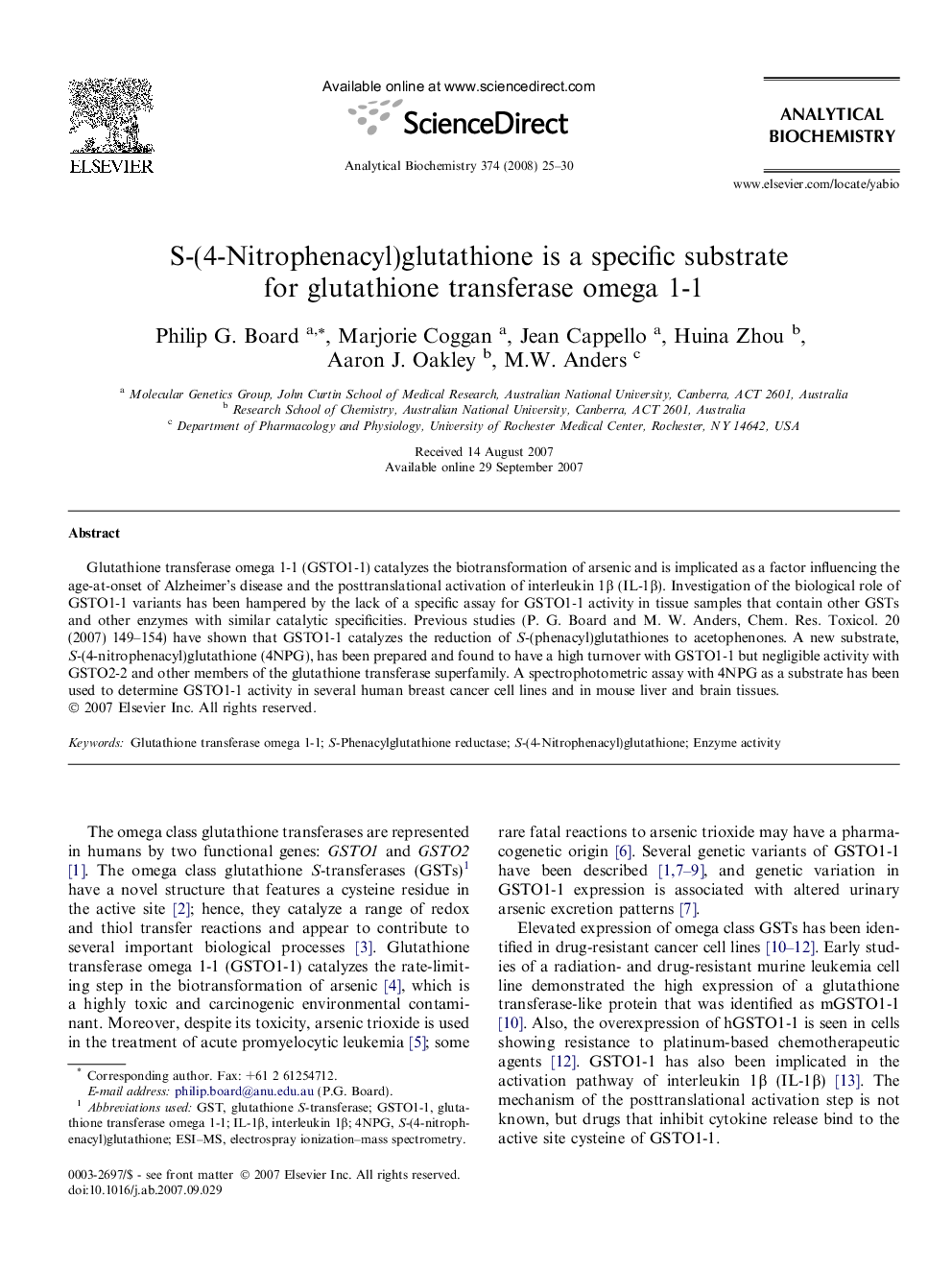| Article ID | Journal | Published Year | Pages | File Type |
|---|---|---|---|---|
| 1177280 | Analytical Biochemistry | 2008 | 6 Pages |
Glutathione transferase omega 1-1 (GSTO1-1) catalyzes the biotransformation of arsenic and is implicated as a factor influencing the age-at-onset of Alzheimer’s disease and the posttranslational activation of interleukin 1β (IL-1β). Investigation of the biological role of GSTO1-1 variants has been hampered by the lack of a specific assay for GSTO1-1 activity in tissue samples that contain other GSTs and other enzymes with similar catalytic specificities. Previous studies (P. G. Board and M. W. Anders, Chem. Res. Toxicol. 20 (2007) 149–154) have shown that GSTO1-1 catalyzes the reduction of S-(phenacyl)glutathiones to acetophenones. A new substrate, S-(4-nitrophenacyl)glutathione (4NPG), has been prepared and found to have a high turnover with GSTO1-1 but negligible activity with GSTO2-2 and other members of the glutathione transferase superfamily. A spectrophotometric assay with 4NPG as a substrate has been used to determine GSTO1-1 activity in several human breast cancer cell lines and in mouse liver and brain tissues.
